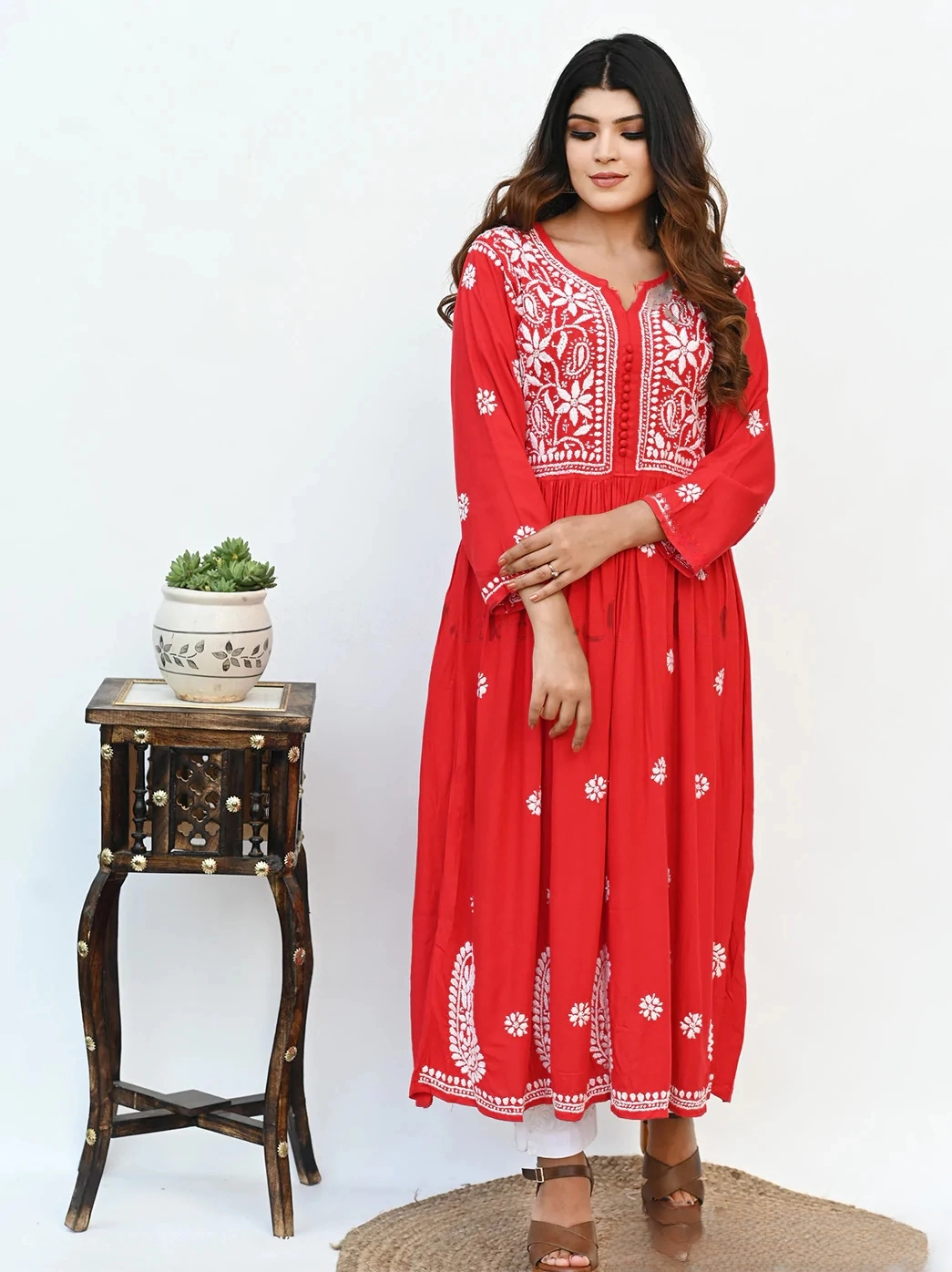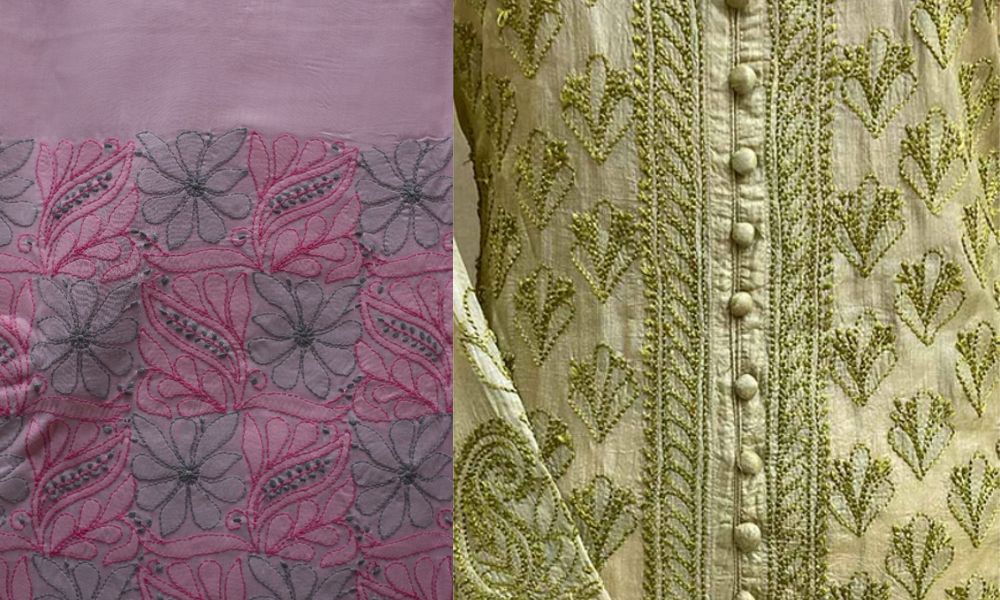Chikankari is one of India’s most famous forms of traditional clothing that has emerged in different parts of the world. While many of you consider it a traditional form of clothing, it has evolved past centuries. The name Chikankari suggests the form of Lucknowi Chikankari patterns that local artisans mostly do. Now, that certainly relates to the handcrafted design and pattern that are being depicted on fabric using needlecraft.
The origin of Chikankari work shows the use of thread for stitches on a thin fabric like cotton or silk. Its basic concept was to make a beautiful pattern using white thread on white fabric. Some people also term Chikankari as shadow work, as it depicts on the other side of the fabric. Here, we’ll explain how handcrafted embroidery is different from machine work.
About Handcrafted Chikankari
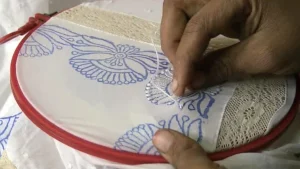
It’s well know that Chikankari is a fine art form of making beautiful embroidery on fabric. Originally, it came from the Persian culture and was adopted by Noor Jahan, the wife of Mughal Emperor Jahangir. So, as it is the art form that began in the 16th Century, there was an obvious use of handcrafted work.
Even today, you can see skillful artisans using their hands for needle and thread work. Usually, they use white thread to make beautiful designs of Chikankari over different fabric materials. The most favorable clothes or fabric material will be – chiffon, cotton, muslin, net, silk, and others.
Process & Making of Hand-Crafted Chikankari
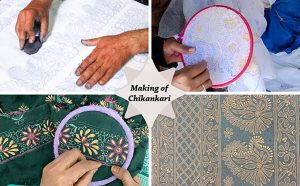
With the latest trends, the local artists of Chikankari making are using different techniques to make beautiful designs of Chikankari. The process of handcrafted Chikankari involves different steps. That’s how it takes several days to complete a single piece of work.
Here is the process of designing and creating Chikankari using hand work –
- Firstly, the artisan chooses a fabric on which the work needs to be done
- Secondly, they use block printing to give an impression of the design that needs to be drawn
- Thirdly, the skillful artisans use needle and thread to make beautiful designs in between the space of temporary ink
- Now, the fabric is there for washing and finishing process
All that this handwork is not everyone’s cup of tea. Only skillful workers can create such beautiful designs that give a finished look and are more elegant on completion.
Read Also: History of Chikankari
Types of Hand-crafted Chikankari
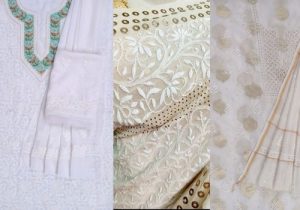
As we know, there are about 36 types of Chikankari stitches; the workers may include most of them in their designs. Some of the famous Chikankari stitches include – bakhiya, teaching, and others.
Most popularly, the artisan may use the following stitches of Chikankari –
- Double back stitch
- Running stitch
- Stem stitch
- Herringbone stitch
- Romanian stitch
Likewise, all these works include a lot of experience and cleanliness in the making. In addition, this art form is complex, and we have workers who have been training in this field for more than 5 to 8 years to draw on real fabric.
About Machine work Chikankari
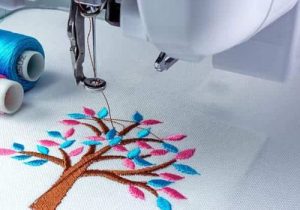
As with time, humans moved towards making the process of Chikankari a bit easy; they invented machines to do the work. Moreover, with recent adaptations, there are many such fabric designs that are based completely on machine work.
Though the process of making Chikankari using the machine is a lot easier, it can never replace what our artisans can accomplish. Thus, humans will always need to handle these machines and the process of their work. Likewise, with the movement of feet, workers may draw beautiful designs of Chikanakari in a symmetrical pattern.
Check Also: Steps of Making Chikankari
Types of Machine Work Chikankari

The latest technology has evolved over the past few years. That’s why different machines create beautiful Chikankari designs in different patterns. Some of the popular ones are as follows –
- Computerized Machine Design – It is modern embroidery machine work that is specifically used with the help of computers.
- Free Motion Machine – It is the most common type of machine work, including zigzag designs on the inside. But on the outside, they display a clean, beautiful design that shows the best features.
Conclusion
It’s likely to say that many people are moving towards handcrafted Chikankari work as it showcases real art. Similarly, buying a machine work Chikankari kurta or any other apparels will cost less than the former one. Now, it depends upon the customer as to what they prefer to buy, depending upon their pricing.
Related Articles:
https://aabroochikankari.com/steps-of-making-chikankari/
https://aabroochikankari.com/embroidery-chikankari-needle-work/
https://aabroochikankari.com/types-of-chikankari/
